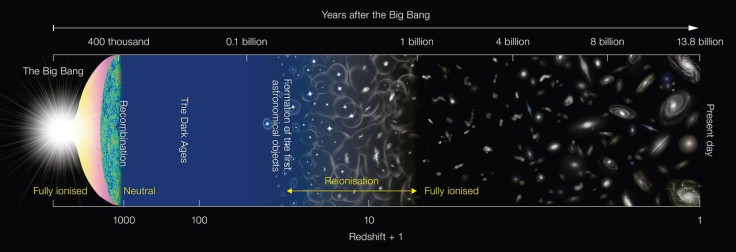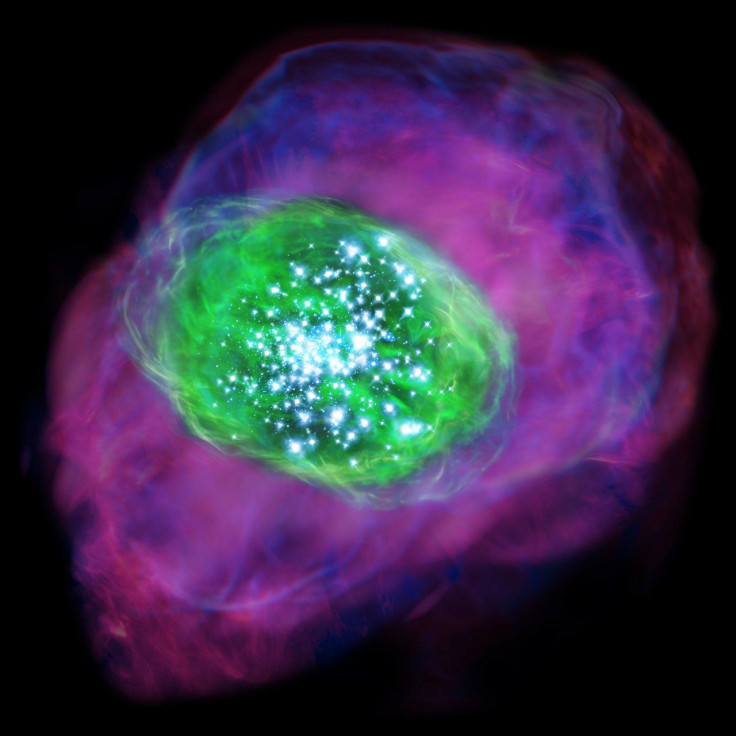Scientists Detect The Most Distant, And Earliest, Signs Of Oxygen In The Universe
In the farthest reaches of the universe lies an ancient galaxy named SXDF-NB1006-2. Not only is this primordial galaxy one of the oldest ever detected, it is also, as detailed in a new study published in the journal Science, one of the earliest and farthest sources of oxygen.
The galaxy, detected using the Atacama Large Millimeter/submillimeter Array (ALMA) in Chile, was born just 700 million years after the Big Bang, and scientists now believe that it is one of the sources responsible for cosmic “reionization” in the early universe.
“Our results showed this galaxy contains one tenth of oxygen found in our Sun. But the small abundance is expected because the universe was still young and had a short history of star formation at that time,” co-author Naoki Yoshida from the University of Tokyo said in a statement released Thursday.
The universe burst into existence nearly 13.8 billion years ago in an event we now know as the Big Bang. In the beginning, the cosmos was a hot soup of ionized gas — with electrons and ions of hydrogen and helium buzzing around. Then, roughly 400,000 years after the Big Bang, the universe entered an era of “recombination,” wherein it cooled down enough to allow ions to recombine into atoms. Although this era is believed to be the first time light shone in our universe, it didn’t last long. The universe was soon plunged into the “dark ages” — the time before the birth of the first stars.

When the first generation of stars were born, they emitted strong radiation that ionized hydrogen once again, and also led to the synthesis of other heavier elements such as carbon and oxygen. Scientists believe that studying the heavy elements from this era would provide essential clues to what triggered reionization and what led to the birth of the first galaxies about 100 million years after the Big Bang.
"Seeking heavy elements in the early Universe is an essential approach to explore the star formation activity in that period,” lead author Akio Inoue from the Osaka Sangyo University, Japan, said in a statement. “Studying heavy elements also gives us a hint to understand how the galaxies were formed and what caused the cosmic reionization."

SXDF-NB1006-2, for instance, would have been a prototype of the sources responsible for reionization. The young galaxy is also believed to contain very little un-ionised hydrogen gas, and only a small amount of dust, which is made up of heavy elements.
“Something unusual may be happening in this galaxy . I suspect that almost all the gas is highly ionised,” Inoue said.
© Copyright IBTimes 2025. All rights reserved.






















